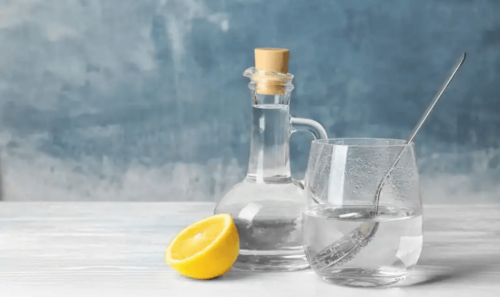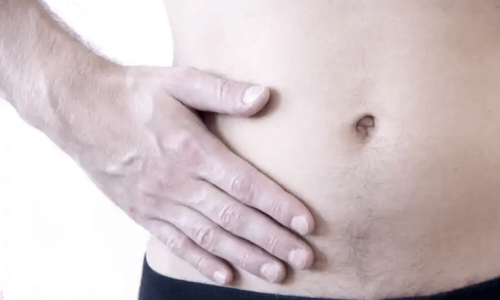A Remedy to Reduce the Swelling Caused by Hernias


Reviewed and approved by the doctor Maricela Jiménez López
What are hernias? As this report from the U.S. National Library of Medicine suggests, a hernia occurs when there’s a weakness or hole in the muscle wall that normally holds abdominal organs in place. As a result, organs and tissues can herniate and produce a bulge.
The most frequent hernias, according to the area of the body, are:
- Femoral, a bulge below the groin, more common in women.
- Inguinal, a bulge in the groin that may reach the scrotum, more common in men.
- Hiatus or hiatal bulges appear in the upper part of the stomach and push up out of the abdominal cavity into the thoracic cavity through an opening in the diaphragm.
- Umbilical, a bulge around the navel area.
- Incisional, a bulge that occurs through a scar from abdominal surgery.
- Discal, the soft tissue between the vertebrae is displaced and passes through a weakened part of the disc. This can put pressure on nearby nerves or the spinal cord.
Many hernias are painless and may only manifest as asymptomatic inflammation. However, they can sometimes generate discomfort and pain that may worsen when standing, making physical efforts, or lifting heavy objects.
When you finally consult a physician due to an increase in pain and swelling, they’ll easily diagnose them by feeling and looking for the bulge.
Treatment may be cautious observation in asymptomatic hernias. However, in other cases, surgery, either open or minimally invasive, might be appropriate.
Read also: Can a Hiatal Hernia be Cured?
A natural remedy to help reduce the swelling caused by hernias
Are you looking for a remedy to help reduce the swelling caused by hernias due to discomfort or chronic pain, you can resort to the combination of three medicinal ingredients: clay, cabbage leaves and vinegar. They’re all anti-inflammatory agents.
Continue reading to find out more about the virtues of this remedy, as well as how to make and use it to obtain relief. Always consult a doctor so they can diagnose your case and prescribe treatment.
Clay
This is one of the oldest remedies in the world. Believe it or not, clay has been applied for centuries to multiple conditions to calm and naturally reduce inflammation. So states this study conducted by the Universidad Autónoma Metropolitana de México.
Clay is great for this purpose as it absorbs water and toxins. Plus, it provides a large amount and variety of minerals through the skin pores.
- Using clay is easy, just mix with water or some other liquid and then apply to the skin.
- Leave it enough time for it to dry and then remove it with water.
- Don’t reuse it as it absorbs toxins.
Vinegar

Vinegar, especially that from apples, can regulate the pH, stimulate circulation and decrease swelling. At least according to research by the Malaysian Agricultural Research and Development Institute. For this reason, it facilitates the recovery of an injury or discomfort that you may have when you apply it to your skin.
Cabbage
This humble vegetable is packed with health properties. It’s an anti-inflammatory and analgesic, according to this research from the University of Duisburg-Essen in Germany. Thus, it helps relieve the discomfort and inflammation caused by hernia. To benefit from its healing power, you have to facilitate the extraction of its phytonutrients.
You can crush or blanch the leaves, or prepare a juice to apply through poultices. If you combine this with its consumption, you’ll multiply its healing properties.
Check out this Natural Treatment for Herniated Discs
How to make the remedy to relieve the swelling caused by hernias
Ingredients
- 5 tbsp. of clay powder (100 g.)
- 2 tbsp. of vinegar (30 ml.)
- 1 glass of water (200 ml.)
- 2 to 3 cabbage leaves
The amounts will depend on the size of the area affected by inflammation. You can vary the quantities of this remedy as long as you keep the proportions in this recipe.
Preparation and application

- Mix the clay, the vinegar and the water. Use glass and ceramic utensils and containers, not plastic or metal ones, so as not to remove the properties of the clay.
- Then, you’ll get a creamy mass that’s ready to apply. If it’s too runny, add a little clay. If, on the other hand, it is too thick, add more water.
- Just when we’re going to use the remedy, blanch the cabbage leaves (put them in boiling water for a few seconds).
- Then, apply this remedy on the entire inflamed area. Place the boiled cabbage leaves over this. Be careful not to burn yourself.
- Let it act for either half an hour or until the clay dries.
- You can repeat the application two or three times a day until you notice an improvement.
All cited sources were thoroughly reviewed by our team to ensure their quality, reliability, currency, and validity. The bibliography of this article was considered reliable and of academic or scientific accuracy.
- Hernia de disco. https://www.medtronic.com/es-es/tu-salud/patologias/hernia-disco-cervical.html
- ¿Qué es una hernia? ¿Cuáles son los síntomas de una hernia? https://www.medicalnewstoday.com/articles/290715.php
- Criterios de tratamiento de la hernia discal aislada y de hernias discales múltiples. http://www.medigraphic.com/cgi-bin/new/resumen.cgi?IDARTICULO=8054
- Hernia de hiato. https://www.mayoclinic.org/es-es/diseases-conditions/hiatal-hernia/diagnosis-treatment/drc-20373385
- Jesús Alejandro Ramírez Funes. (2005). Remedios caseros para hepatitis y hernias. Revista Vinculando. https://vinculando.org/remedios_naturales/tratamientos_naturales_para_hepatitis_y_hernias.html
- Shakil, A., Aparicio, K., Barta, E., & Munez, K. (2021). Hernias Inguinales: diagnóstico y tratamiento. Atencion médica. News 2021, 1-9. https://atencionmedica.com.mx/pro/descarga/chopo/2021/new_am_07_01_2021.pdf
This text is provided for informational purposes only and does not replace consultation with a professional. If in doubt, consult your specialist.








